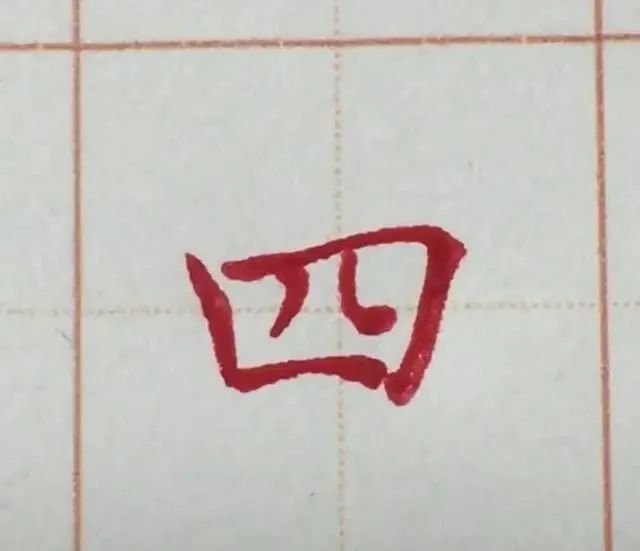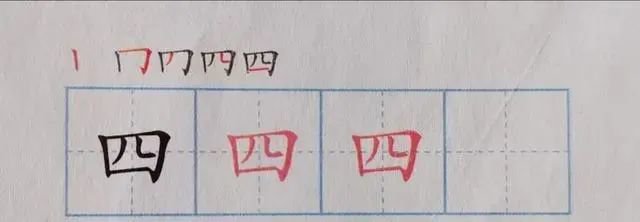Is the second stroke of "four" a "horizontal fold" or a "horizontal fold and hook"?

In the unified textbook, the second stroke of the character "四" is a horizontal fold, which is consistent with the "Stroke Order Standards for Common Chinese Characters in Modern Chinese" jointly issued by the National Language and Character Working Committee and the Press and Publication Administration of the People's Republic of China in 1997.

"Modern Chinese Common Character Stroke Order Standards" are printed in Song style, in which the second stroke of the character "四" is a horizontal fold. Considering that regular script is closer to handwriting, lower-grade primary school Chinese textbooks are printed in regular script. There are individual differences in the glyphs of regular script and song script. For example, in the popular regular script font library, the second stroke of the character "四" often has a hook. However, this stroke is not a horizontal hook, but a horizontal fold. This situation has been explained in the "Teacher's Teaching Book", a set of unified primary school Chinese textbooks published in 2016.

In addition to the four characters, the second stroke of the character "目" is also horizontally folded, but it looks somewhat similar to the horizontally folded hook. The hook here is the hook naturally brought out by the stroke when writing. It is the result of the connection of the strokes. It is different from the hook in the horizontal fold hook of the words "月, Bao" and other words. Similar characters to "mu" include "四,田,回,国", etc. The second stroke of these characters is also a horizontal fold, rather than a horizontal fold hook. When writing this kind of characters, there is no need to deliberately hook them below.








